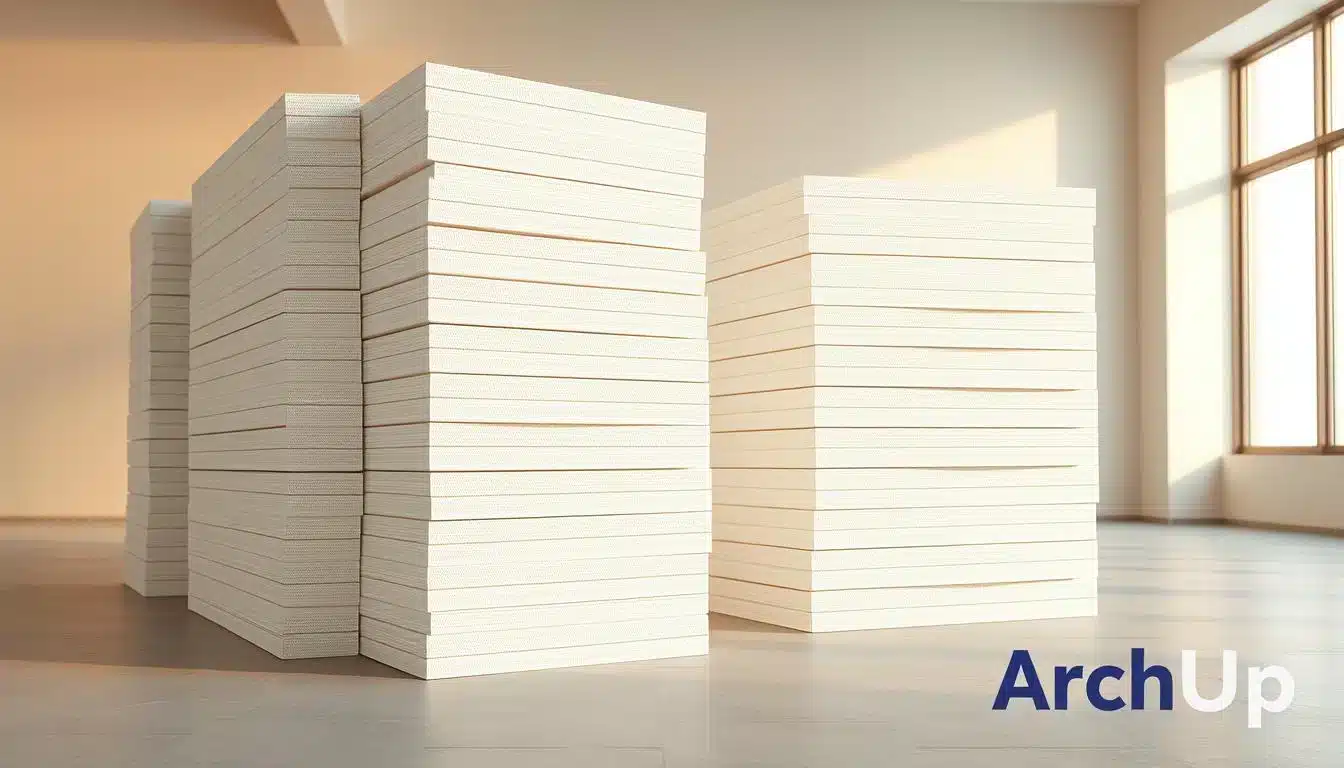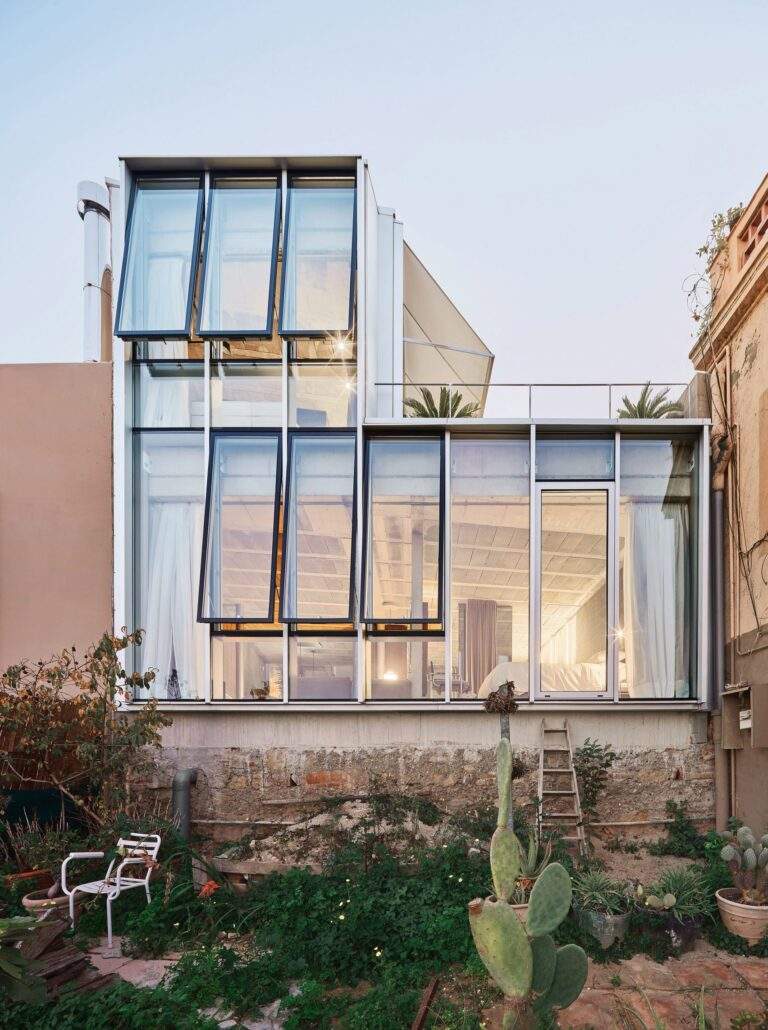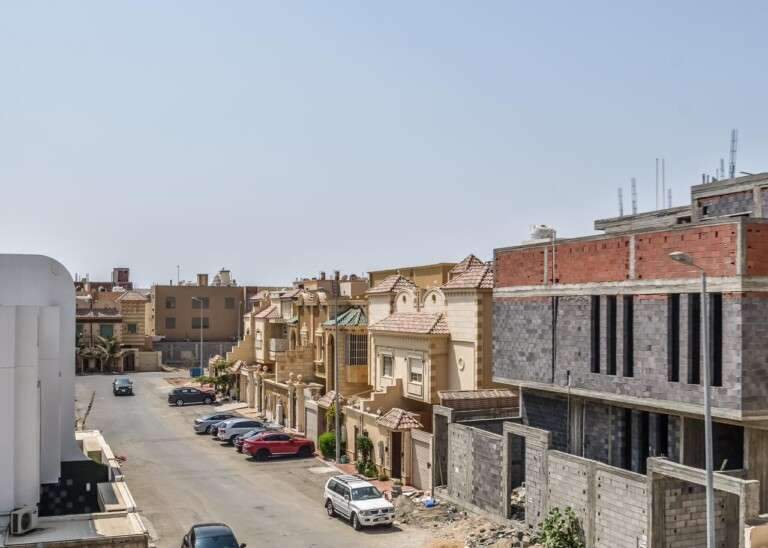Gypsum boards are a cornerstone of construction, widely used for walls and ceilings. Choosing the right size impacts a project’s quality, cost, and efficiency. This article explores the types and sizes of gypsum boards, the importance of selecting the appropriate size, and strategies to minimize waste. We’ll also cover installation techniques, practical tips to avoid common mistakes, and an exclusive ArchUp analysis with a critical perspective.

What Are Gypsum Boards and Why Are They Important?
Gypsum boards consist of a gypsum core encased in reinforced paper, offering durability and ease of use. They provide fire resistance and sound absorption, making them ideal for residential and commercial buildings. Selecting the correct size reduces waste and simplifies installation.
“Gypsum boards offer an economical and efficient solution for finishing walls and ceilings while meeting safety standards.”
Source: Gypsum Association (USA)
Standard Gypsum Board Sizes
Gypsum boards come in various sizes to suit different project needs. Below is a table outlining the most common sizes:
| Length (ft) | Width (ft) | Thickness (in) | Common Use |
|---|---|---|---|
| 8 | 4 | 1/2 | Interior walls |
| 10 | 4 | 1/2 or 5/8 | Ceilings and walls |
| 12 | 4 | 5/8 | Commercial buildings |
| 14 | 4 | 1/4 or 1/2 | Curves or ceilings |
Length and Width
Boards measuring 8 or 12 feet in length are the most popular. Longer boards reduce the number of joints, resulting in a cleaner finish and lower labor costs.
Thickness
Thickness ranges from 1/4 to 5/8 inches. Thinner boards (1/4 inch) are used for curves, while thicker boards (5/8 inch) are preferred for fire resistance and soundproofing.

Types of Gypsum Boards and Their Uses
Gypsum boards vary by purpose. Here are the main types:
- Regular Boards: Used in homes and offices, available in sizes like 4×8 or 4×12 feet.
- Fire-Resistant Boards: Contain additives for enhanced fire resistance, ideal for commercial kitchens and stairwells.
- Moisture-Resistant Boards: Identified by green or blue coloring, used in bathrooms and kitchens.
Weight and Transportation Requirements
The weight of gypsum boards depends on their size and thickness. For example:
- 1/2-inch thick board: Approximately 1.6–2 pounds per square foot.
- 5/8-inch thick board: Approximately 2–2.5 pounds per square foot.
Larger and heavier boards require specialized equipment or additional labor for transportation and installation, increasing costs if not planned properly.
How to Choose the Right Size for Your Project
Residential Projects
For homes, 4×8 or 4×9-foot boards with a 1/2-inch thickness are common. Consider stud spacing and requirements for soundproofing or fire resistance when selecting a size.
Commercial Projects
Larger boards (4×12 feet) are preferred in commercial settings to minimize joints and save installation time. A 5/8-inch thickness is often used to meet safety standards.
Mistakes to Avoid
- Choosing sizes that don’t align with the building’s framework, leading to material waste.
- Ignoring fire or moisture resistance requirements.
- Overlooking the weight of boards and its impact on transportation.


Installation Techniques Based on Size
Handling Boards
Large boards require careful handling to avoid damage. Support them along their length during transport, and use drywall lifts for easier installation.
Cutting and Fitting
Use a sharp utility knife or drywall saw for precise cuts. Accurate measurements are crucial to minimize waste and ensure a proper fit.
Fastening by Thickness
Thicker boards require stronger screws and closer fastener spacing. Follow the manufacturer’s guidelines to ensure a secure installation.
ArchUp Perspective: Analysis and Critique
Gypsum boards are versatile, but the industry lacks standardization across manufacturers. Some companies offer non-standard sizes, complicating project planning. Additionally, information about moisture resistance is often vague, which can lead to poor choices. We recommend that manufacturers provide a clear, unified guide detailing sizes and applications. Despite these issues, gypsum boards remain a cost-effective and reliable option when selected carefully.
Frequently Asked Questions (FAQ)
What are the standard sizes of gypsum boards?
Sizes range from 4×8 to 4×14 feet, with thicknesses from 1/4 to 5/8 inches.
How do I choose the right size for my project?
Consider the type of construction, safety requirements, and stud spacing.
Can large boards be used in residential projects?
Yes, but they require specialized equipment and skills for installation.
What are common mistakes when selecting gypsum boards?
Choosing inappropriate sizes, ignoring fire or moisture resistance needs, and overlooking weight considerations.


Summary Table
| Key Point | Details |
|---|---|
| Standard Sizes | 4×8, 4×10, 4×12 feet, with thicknesses from 1/4 to 5/8 inches |
| Types | Regular, fire-resistant, moisture-resistant |
| Weight | 1.6–2.5 pounds per square foot, depending on thickness |
| Selection Tips | Consider construction type, safety needs, and avoid waste |
| Installation Techniques | Use proper tools, measure accurately, and follow fastening guidelines |







